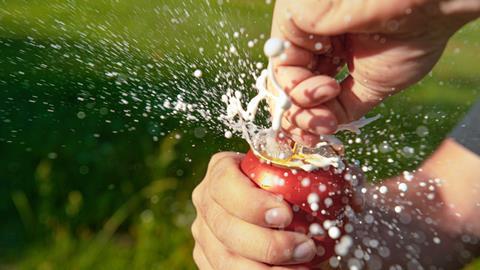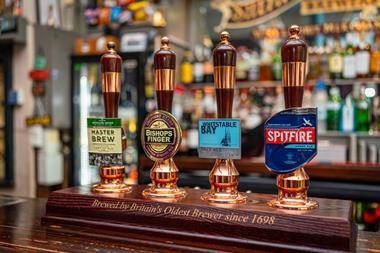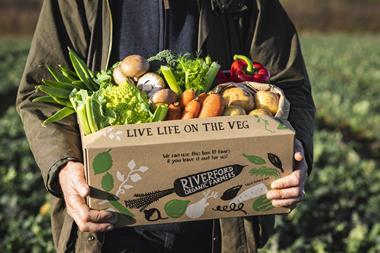They’re at it again and this time with a natty new portmanteau to lead the conversation. The critics have moved on to ‘drinkflation’ and of course, brewers are the demons for not passing their abv reduction tax savings on to the consumer.
Beer brands like Heineken-owned Foster’s and Shepherd Neame-owned Bishops Finger and Spitfire are among some of the brews with recently reduced abvs. The brewers are accused of cutting percentages, triggering tax savings while also hiking prices.
Foster’s alcohol content went from 4% to 3.7%, saving Heineken 3p in tax per can; Bishops Finger dropped from 5% to 4.8%, saving 2p per bottle; and Spitfire is down from 4.5% to 4.2% with a saving of 3p on a bottle.
Changing the make-up of a product to balance the books is not the prefered solution for popular brands. This is clear in confectionery, with many makers reducing the size of products through ‘shrinkflation’ rather than adapting recipes. For brewers, it’s a way around duty pressures.
Brits pay some of the highest beer duty in Europe
Brewing is one of the UK’s most heavily taxed businesses, earning the Exchequer more than £15bn in revenue annually, says the British Beer and Pub Association. On top of that, UK beer duty is the third highest in Europe at over 54p per pint. These are non-negotiable and should other input costs, such as energy bills and wages rise (which they have done significantly), then options must be weighed to ensure a brand’s financial viability.
Few brewers would willingly reduce abv unless forced to by tax burdens or changing consumer demand. Incidentally, low & no alcohol is a growing category and, as some brewers have clumsily claimed, abv reductions play into this trend. A 0.2% alcohol shrinkage is not going to make a big difference to consumers cutting down on their booze intake.
The truth is the move is nothing to be ashamed of. Brewers have and are lowering the abv of beers to reduce cost pressures and maintain attractive pricing for consumers. In most cases, it’s not to swindle drinkers out of a few pennies per tinny – though arguably this could be the case for some.
Margins are tighter than ever, supermarkets demand suppliers keep prices low as possible and consumers don’t want to spend much more on their bottles of Spitfire.
Foster’s ranks high in Britain’s Biggest Alcohol Brands
Some of these brands are big sellers but in steep decline and unable to stem value losses with price increases. Foster’s, for example, is ranked high in The Grocer’s Britain’s Biggest Alcohol Brands report. Revealed later this week, the report will show the brew has shed double-digit value and volume [NIQ 52 w/e 22 April 2023].
Many brewers made the changes recently in preparation for new duty rules and the tax savings will remain relatively stable when the government’s new alcohol duty system comes into force on 1 August.
At the same time, an across-the-board rate increase of 10.1% comes into force, marking the end of the alcohol duty freeze, and covering all alcohol products apart from draught.
So, the few pence being saved now will seem like even smaller change by then.




















No comments yet